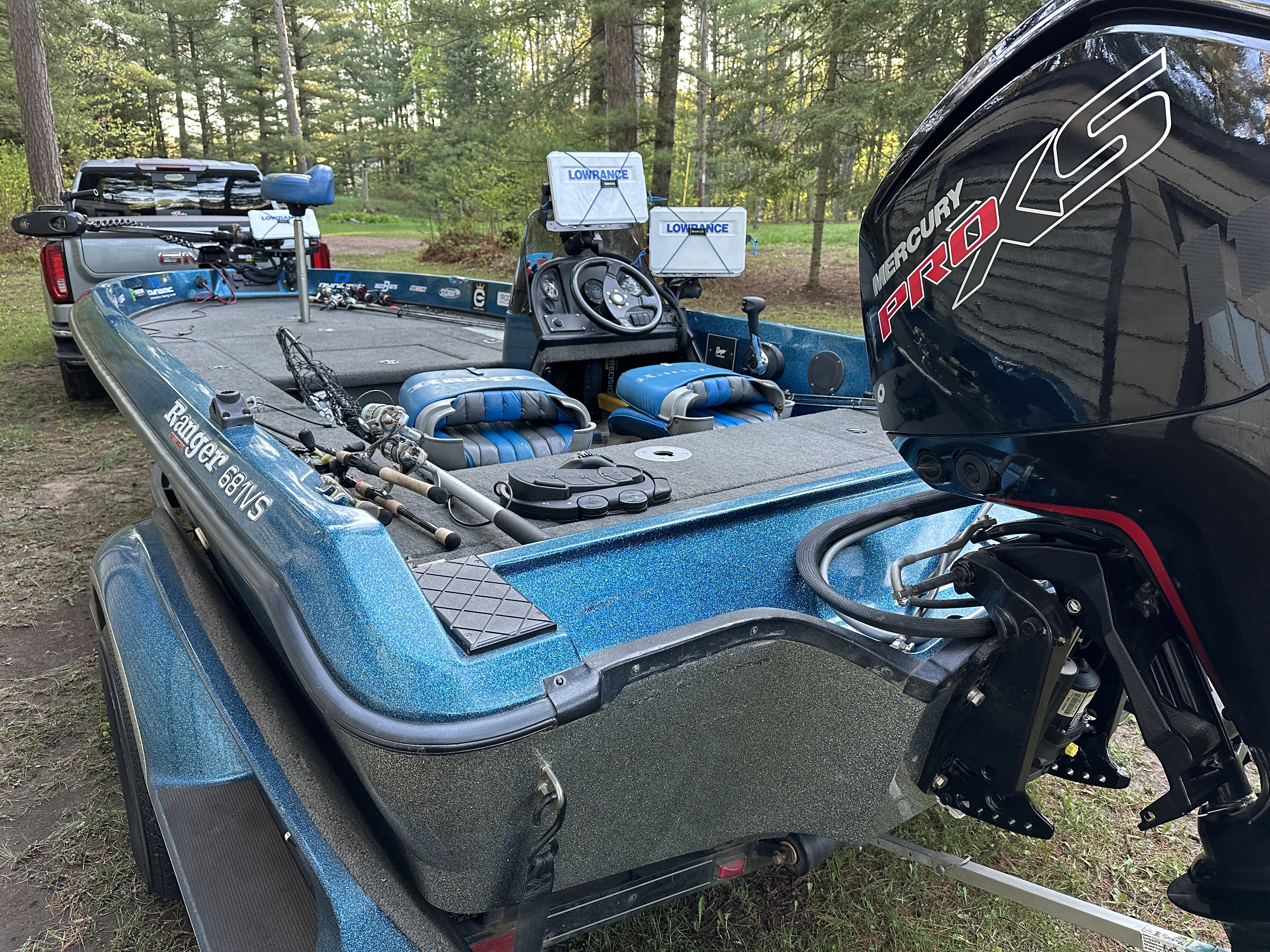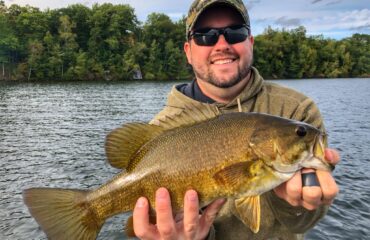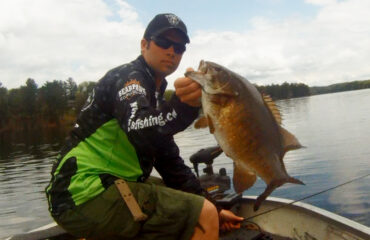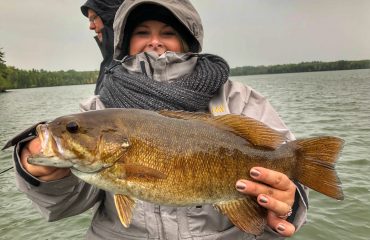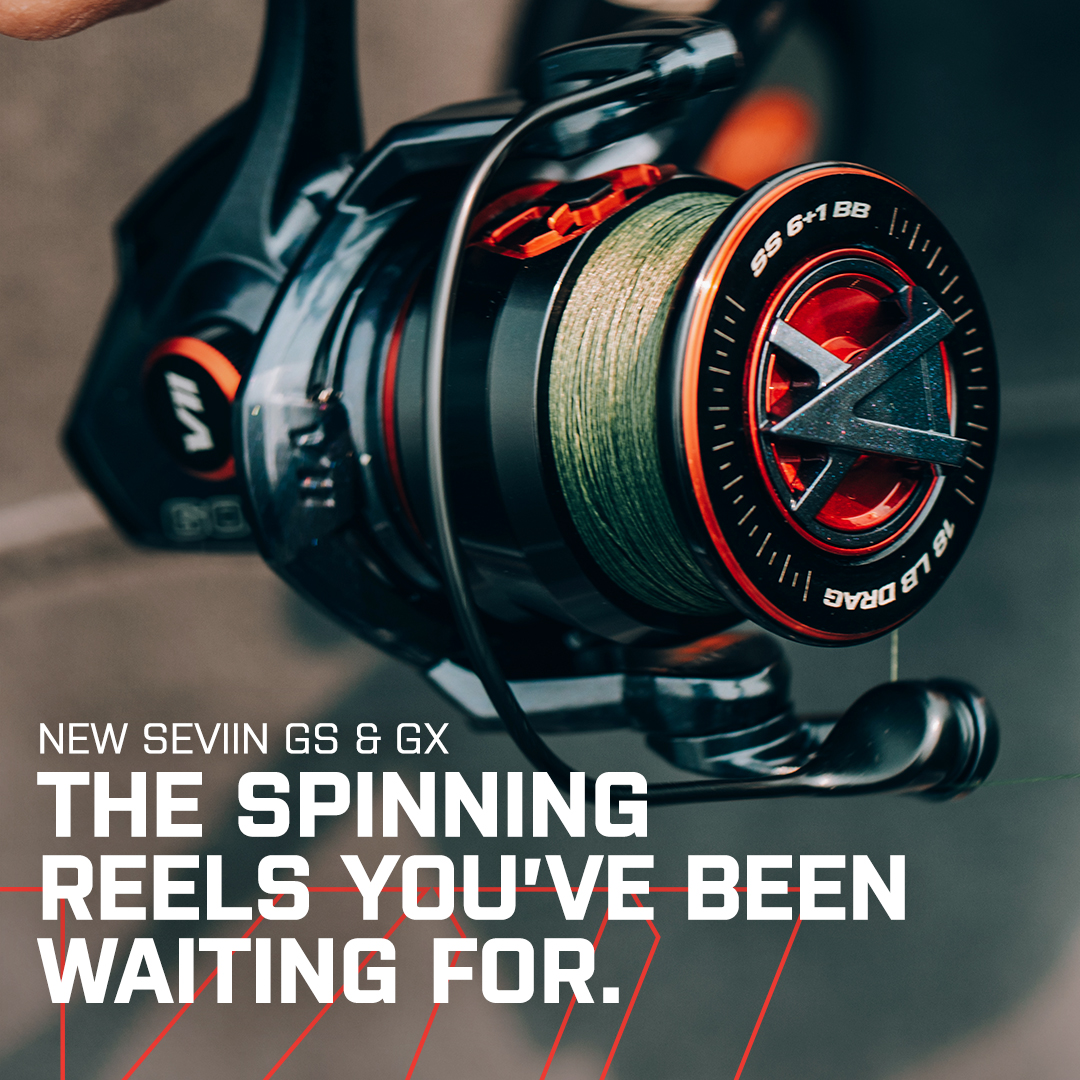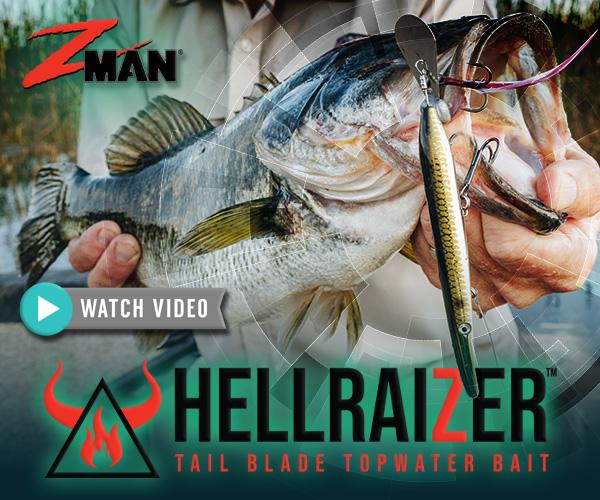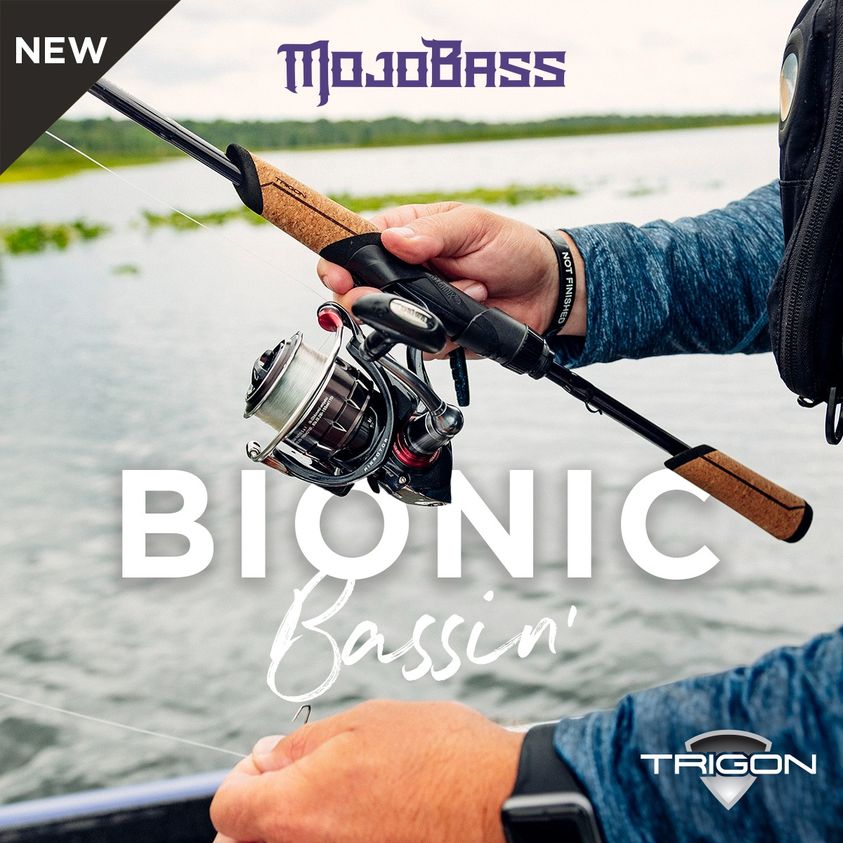The Best Fishing Boat Upgrades
Today’s marine market has priced out most serious anglers and consumers. Whether seeking an aluminum deep-V or flat bottom jon, or a fiberglass bass boat or multi-species hull, acquiring any boat type from every manufacturer is expensive, as will be the cost of its ownership. To buy a new boat nowadays, one must have deep pockets, or be able to take out a whopping loan to pay off an $80,000-to-$100,000 fishing machine.
No thank you.
Boat prices are commonly determined by numerous factors which includes hull materials, the construction process and labor costs, factory location, labor costs, and the endless list of equipment a hull gets furnished with which includes trailer, engine, electronics, and other accessories. The market is also another factor too, in determining the pricing.
In prior generations, I recall when some manufacturers prided themselves and their vessels on affordability. Then something happened in recent years, and this philosophy is no longer the goal as the average rig goes between $30,000-to-$60,000.
Most serious anglers are getting priced out.
If you can afford the price tag of a new boat, congrats to you. Meanwhile, if you are unable to afford one, be mindful of the re-sale market and know when to act quickly as a buyer when it’s a buyer’s market.
Once you are the owner of a used, older boat, know how easy it can be to invest your time and resources into upgrades like I have done to my Ranger 681VS over the course of my 10 seasons of ownership.
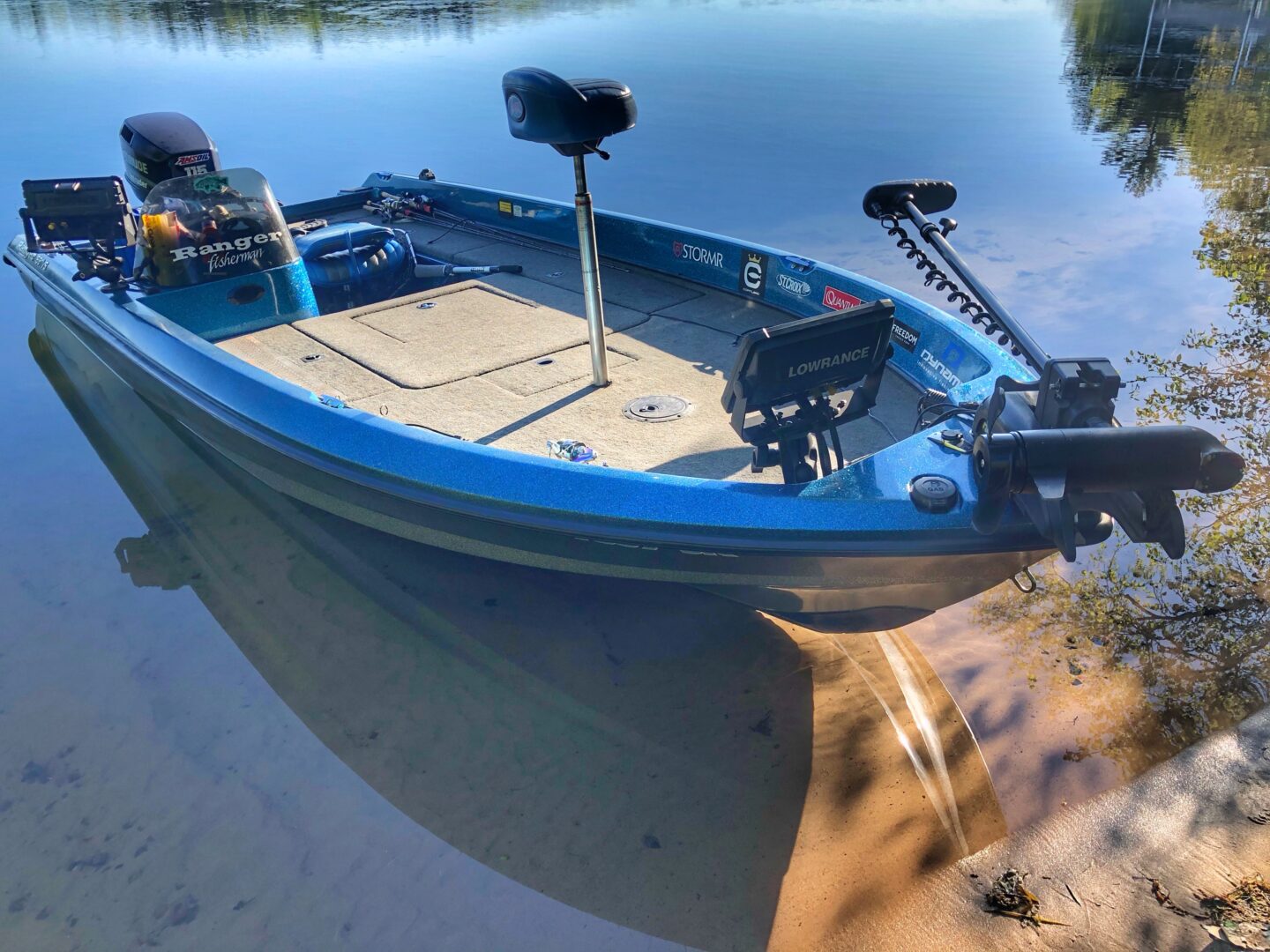
I Bought an Older Ranger Boat
Back in 2012, I starting a savings for my next boat. Only problem back then was I was 2 years removed from college, and making considerably less money from my self-employment than I am now. Most of my leftover disposable income went into my squirrel fund. The process took me nearly 3 years before I felt confident that I could afford anything semi-nice and to my specifications that was within my price range of $10,000-to-$15,000. Back then, this was a lot of money and it could buy you a lot.
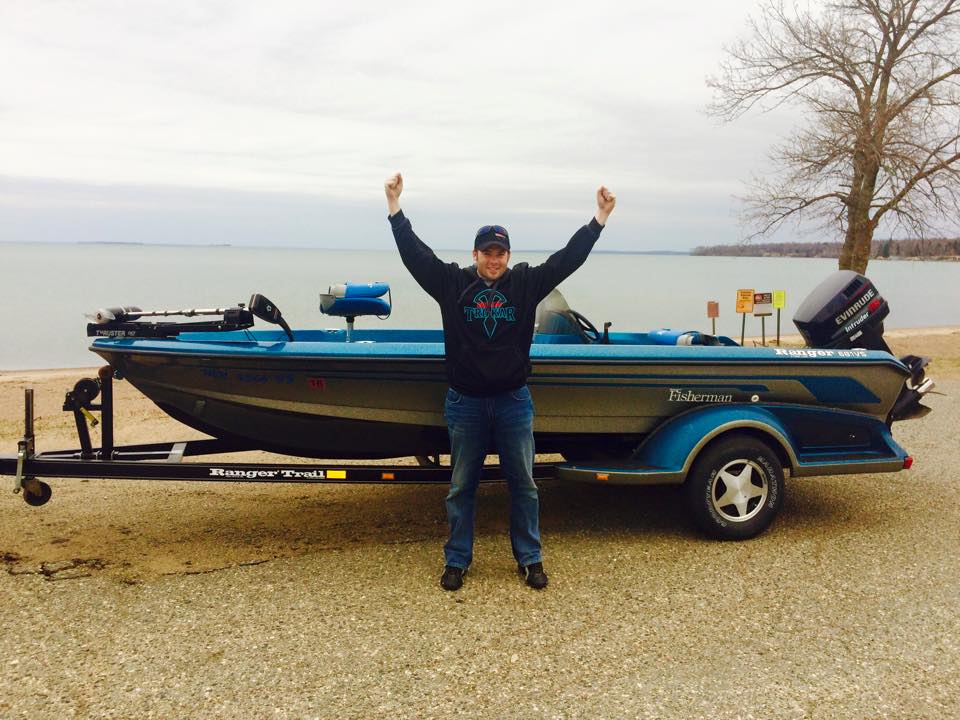
I immediately identified wanting an older Ranger deep-V that wouldn’t cost me an arm and a leg. I noted this would be the most suitable boat for my personal fishing needs and northern US fishing regions due to the hull construction and comfort, layout and deck space, and ability to withstand waves. The boat also needed to have a Yamaha or Evinrude on it (personal preference at the time).
I always loved the layout and setup of Ranger’s hulls from the mid-to-late 1990’s era, specifically the 681 VS Fisherman. At 18-and-a-half-foot length, and an outboard rating to 130-horsepower, this would be just the right amount of boat for every lake I fish, including in Northwest Ontario.
Being on a budget, and targeting only one specific boat like this gave me patience and the development of very high standards.
The worst thing that could ever happen when buying a used boat like this was if I didn’t do my homework and due diligence on the engine and all previous ownership and repair histories. It was good to be picky on this one.
For over two years of actively searching online through Craigslist and other fishing boat sales websites, I picked through several dozens of Rangers located throughout the Midwest before my rig fell into my lap.
This boat wasn’t even in my top-2 at the time of purchase.
It was in mid-April of 2015 when I inquired on a 1996 Ranger 681VS located in Park Rapids, MN. At the time of inquiry, another buyer was first in line before me. Then I stated to the seller I have cash in hand and I insisted on buying it. The guy who wanted to buy it first didn’t have his moneys in order.
A day later, the deal fell through for him. Lucky me, and I coordinated purchase and pickup for later that week.
From Minocqua, WI to Park Rapids, MN, we went on a 643-mile round trip. I was now the owner of an older Ranger boat.
Today this remains the best 10-grand I’ve ever spent!
In the 10 years since, my rig has undergone several modifications and upgrades. Today, it is a serious fishing machine that looks newer and fishes better than some of today’s more modern vessels.
Why to Upgrade?
BOAT – Bust out another thousand.
Upgrades are all part of the fishing and boating lifestyle, and everyone should want to get their rig decked out according to personal specifications. You should also want to add value, comfort, function, and fishability. It will all reflect your fishing style, and greatly influence your success.
At the time of acquisition, my boat wasn’t rigged with anything other than a 1996 year 115 Evinrude Intruder with an estimated 150 lifetime hours. Buying a boat that was equipped with nothing but a functioning motor needing minor repairs at the time allowed me to immediately get to work with upgrades.
The best upgrades I’ve done have protected my investment, extended its lifetime, improved its fishability, and added considerable value. Here they are…..
Trolling Motor
No other piece of equipment will be put through rigorous daily torture than a trolling motor. This was the first piece of equipment I replaced. Somehow, the boat managed to work for nearly 20 years with a 20-plus year old 55-pound 24V Motor Guide.

With the $5,000 I had left over in spending money, that first week of new boat ownership saw me order and install all new batteries, and a new 80lb 24V Minn Kota Terrova. My new trolling motor had spot lock, and all the bells and whistles. This motor withstood over 8 seasons of abuse before it needed to be updated to another new Terrova (pictured above) with improved functions and boat positioning abilities.
Trolling motors wear out over time, and their efficiency and technological advances in the last decade have been massive. Getting a trolling motor with a functioning spot lock like a Terrova is worth the immediate investment for every boat.
Average Cost: $2,500
Electronics
If your fish locator is older than 5 seasons and its operating software is no longer updatable, it is considered out of date.

Pricier than trolling motors, but worth the investment if your objectives are to find fish with the aid of technology, most modern fish locators will feature side imaging, down imaging, charting and mapping, and traditional sonar functions. Forward-facing sonars and live imaging are optional, but most of today’s units are now compatible with these added functions and the transducer. I have gotten by without FFS up to this point (June 2024), but will have it installed mid-summer just to have it.
I tend to upgrade my Lowrance screens every 5 years. I have operated Lowrance HDS 12 units ever since I got the boat. I want to run screens from one brand only because it is easiest to network them together so they can share waypoints, routes and tracks, and transducers. Then whenever the next upgrade is needed, it’s an easy plug-in and play.
For their mounting, I like the simplicities and adjustability of using RAM mounts.

Since 2021, I have upgraded to a Lowrance HDS 12 Pro at the bow, and a dual-screen of HDS 12 LIVE’s at my console. In the last 3 years, I have invested over $9-grand into this segment of the boat.
Don’t tell my wife…..
Average Cost: $3,000 per unit
Batteries and On-Board Charger
Lithium is the standard today. Currently, I am stuck with my newer, 2-year-old heavy X-2 Power AGM’s until they expire. At that point, I will fully upgrade the boat to entirely Lithium and also invest in a new lithium-compatible charging system.
Today, you should all be going for Lithium batteries for everything but your starting battery, as they will power your boat more effectively, longer, and cost-effectively than lead acid batteries ever will. Despite their high immediate costs, the cost savings, warranty and lifetime of a single battery (up to 10 years) far outweighs it.
I look forward to the day I dump my heavy 70-pound AGM batteries for lithiums that weigh 3 times less. In the process, it’ll also reduce the weight of my boat by more than 100 pounds. This process has already begun for me, as a few weeks ago I acquired my first ever Lithium, a 12V 100AH Dakota Lithium which will be powering my 3 screens and Lowrance Active Target 2.
Don’t skimp on your boat’s onboard charging system. One of the first upgrades I ever did to my Ranger was replacing its antiquated 3-bank charging system to a digital Minn Kota Precision. This charging system quickly recharges, and has maximized my time on the water.
Lithium powered boats weren’t yet a thing back in 2016, so my conversion to lithium will also necessitate in upgrading the charger also to one that is lithium compatible.
Average Cost: $400 to $900 per battery type and size; Charger $400 to $600
The Outboard
If planning to buy a used boat, or an older boat, acquire it with the expectations of repowering it someday in the future. This will be the costliest investment you can give an older boat, but one that will pay dividends down the road if you intend on keeping it for several more years, or in the event you consider selling it and try to maximize its resale value.
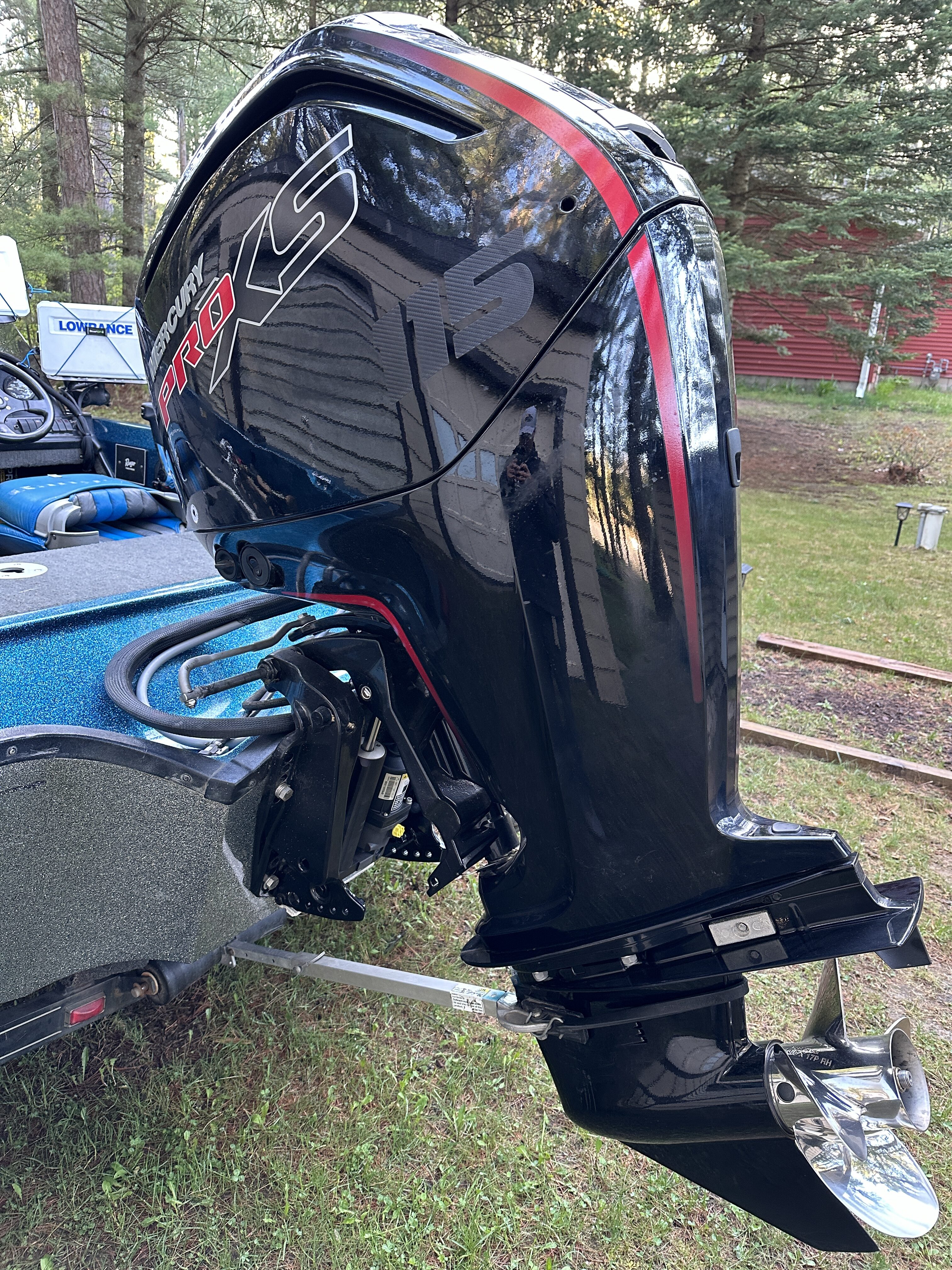
I was lucky to have gotten 8 seasons with my Evinrude Intruder before repairs and maintenance became too frequent and costly. I just got tired of repair bills surpassing $1,000. I got tired of pouring money into it. And I also got tired of $50 gas fill-ups of non-ethanol fuel every 2 to 3 days. Worse, Evinrude became obsolete following BRP’s shut-down of the brand in 2020. In recent years, local shops have had issues getting parts for my outboard. So, the timing got right for a repower.
Regretfully, I wish I saved up a little more money to buy a boat that came with a 4-stroke, but getting the Ranger hull was more important to me than the motor it came with. After the 2022 fishing season ended, and out of necessity, we made the order for a 115 Mercury ProXS.
Through my guiding, I was able to save all the tips and gratuities I had accumulated since 2016 into another squirrel fund. By the end of 2022, I had saved enough in cash to afford buying a new outboard.
Costly, this repower has been a damn good purchase and business expense. For peace of mind, it is under warranty. The maintenance is easy. No more oil expenses, and far fewer gas fill-ups.
The repower is worthwhile if your hull and condition of the boat is in fantastic shape like mine is, and if planning to keep it for another 5 to 10 years or longer.
Along with the outboard, invest in a good stainless-steel propeller. I chose Mercury’s X7 Spitfire. Its speed and handling are impressive.
Average Cost: $12,500 for motor; $3,000 rigging; $600 propeller
Glass and Gel Coat Work
Fiberglass boats require more maintenance and upkeep over aluminum boats. My Ranger requires weekly wipe-downs with hull cleaning solutions and annual detailing, buffing, waxing and polishing with protectant sealers (each of which takes me a few hours to do). This extra work I give it maintains its shiny, new appearance. When I tell folks at the boat landing or around town it’s a 1996 hull, their faces are in shock.

I cry when my boat gets a scratch, or chip. I also don’t allow any abrasive docks to ever touch it. Thankfully, there are boat restoration shops out there who are able to do the repair work and maintenance that I cannot. Of which, I have had a few previous dings already filled in.
On these hulls and the Ranger Trail fenders, the clear coat serves as the protective layer, shielding the underlying gel coat from harsh elements that includes water stains, dirt and dust, and harmful UV rays. Maintaining the clear coat enhances the hull’s color and appearance, extending its lifespan.
UV rays are exceptionally damaging to the boat, causing oxidation, fading, and deterioration of the gel coat. Neglecting your hull will get very expensive if left ignored.
Over the years, I have tried a number of brands for my hull cleaners and sealants.
For a simple spray-on and wipe-down cleaner, I’ve had great recent experience with Boat Bling Hot Sauce. I clean my boat with this on a weekly basis.
For clear coat restoration, scratch mitigation, and oxidation removal, I have done very well with 3M Marine Rubbing Compound – applied by hand and with my Porter Cable buffer.
As a protective sealant, my hull has done best with Collinite Heavy Duty Marine and Aeronautical Fleet Wax. It gets applied once or twice annually. Alternatively, I have also used ceramic coating sealers such as 303 Graphene and the results with it have been favorable thus far.

Whether DIY like me, or professionally done by a marine detailer or fiberglass restorer for serious repairs, caring for your fiberglass hull like this is a necessary annual maintenance. It also helps to keep your boat storage in a garage when not in use.
Average Cost: Varies
Trailer Upgrades
Over the years, my Ranger Trail has undergone several upgrades as well. If you are the owner of a 20+ year old vessel, you should also expect for a trailer and each of its original factory parts should eventually need replacing too.
Winch, bow roller, bunks, fenders, LED lights, axle, bearings, rims and tires….. I’ve updated everything by now.
After I bought my boat, the first things we also did was replace the winch system, and the bow roller.
I couldn’t believe a 1,500-pound rig like this got sold with a dinky metal winch. The Fulton brand is tops in this department, and the Fulton F2 Series Winch came highly recommended. This upgrade for $200 greatly proved the functionality and effort of winching and securing the boat on trailer.

The trailer’s original bow roller was in a sad state of affairs, and greatly undersized for the hull. I upgraded to a custom cut Stoltz Bow Roller for a cost of only $50. This protects the nose of the boat, securing it and cushioning it to the trailer.
By 2019, both of my trailer’s fenders began to detach from the frame. Their carpeted padding was also ripping. That summer, I had all of my trailer bunks re-done, and both fenders refinished. The bill was a little more than $1,200, but an update that was worthwhile. In the process, we also upgraded all trailer lights to submersible high-powered LED’s acquired through E-Trailer.com.
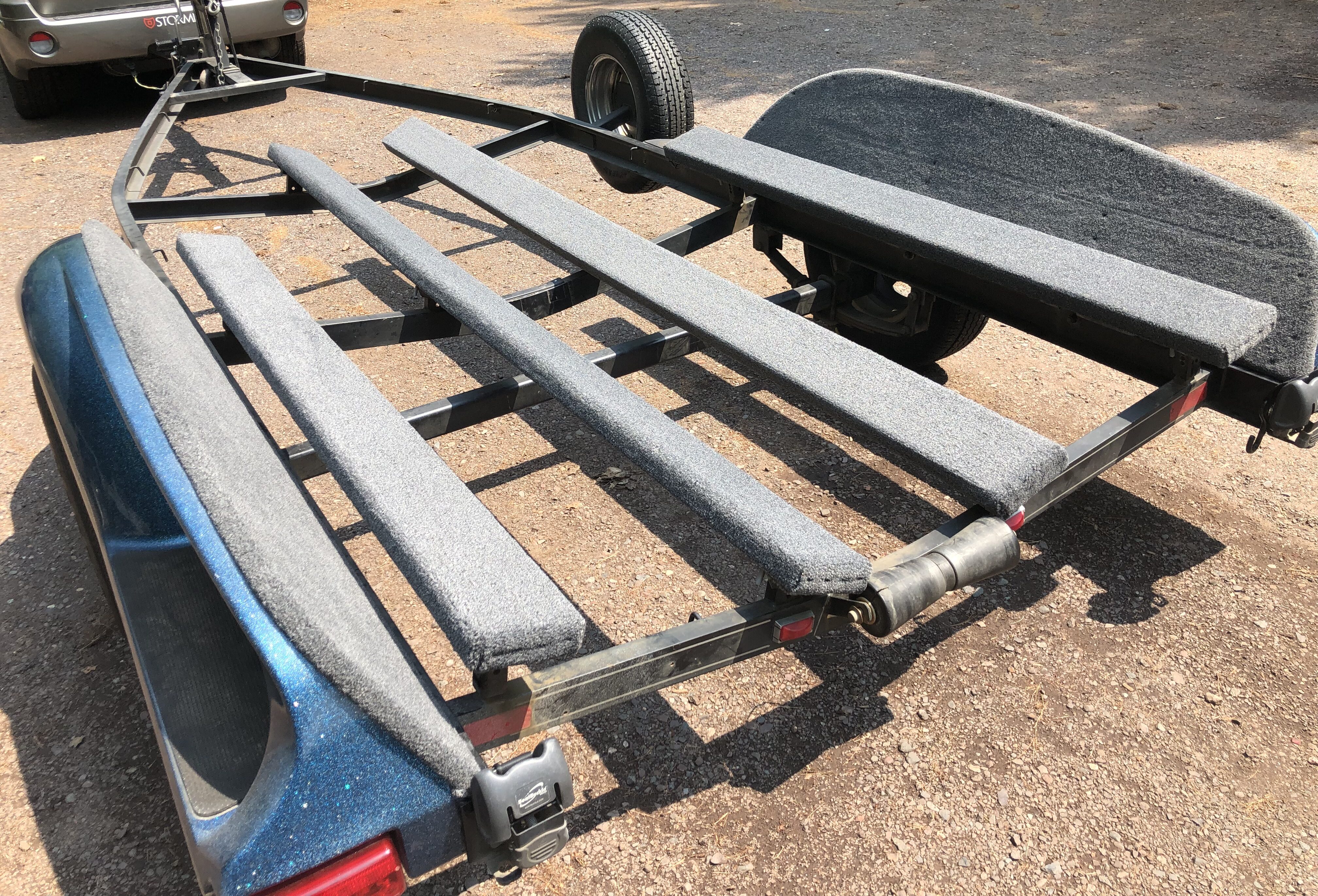
In November of 2023, my trailer’s original axle and spindle seized, and its Ranger Cool Hubs system blew out. This necessitated a complete replacement. And while we were at it, the wheels and tires got updated too. My vintage Ranger Trail now looks like a modern-day Ranger Trail. Despite these recent upgrades, I learned a painful lesson that my trailer should have received better maintenance over the years as this recent repair could have been avoided.

Along with boat upgrades and expenses, expect your trailer needing them too. I am very glad mine has received the updating that it did, and everything has been replaced to last me a long time.
Average Cost: Varies
You Don’t Need to Buy a New Boat Every Few Years
Fishing is what you make of it, and so too are our rigs. How well they operate and are equipped will be a reflection of our maintenance and upkeep, fishing style, and investment into them.
There is no need to go overboard for modifications and updates of this scale, but if you live off your boat like I do, and rely on it heavily for work and pleasure, these are all worthwhile investments worth consideration – especially if it’s a hull for life, or you intend on keeping it for the long term.
With creativity and a vision built out of necessity, every upgrade I’ve done was made over the course of 10 years. This timeline and the phases of upgrades eased the burden of ownership and the expenses.
If in the market for a used, new-to-you boat, I hope this showcases that you can transition an outdated fishing boat into a much-improved, serious fishing machine all within a few years if done strategically, and personal finances allow.
I take a lot of pride and satisfaction in my vessel. How I’ve been able to personally configure it to my fishing needs is far more effective, accurate, and priceless than any manufacturer and newly-built rig exceeding a $100,000 sale price could ever achieve for me.
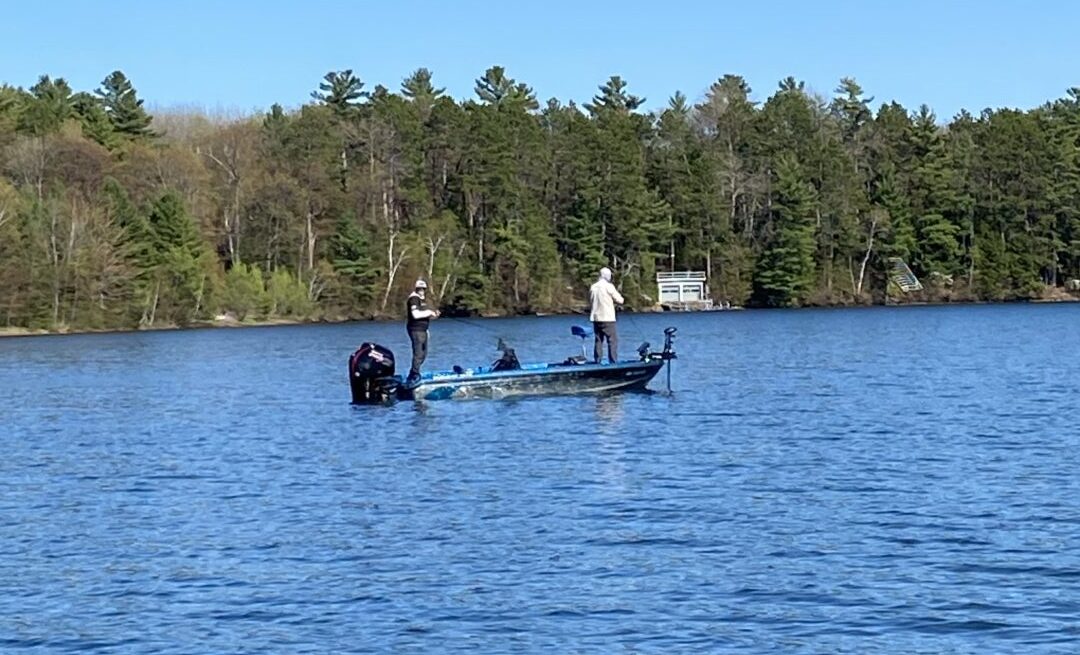
Andrew Ragas splits time between the Chicago area and Wisconsin’s Northwoods. Based in Minocqua, WI, he specializes in trophy bass fishing and offers guided trips from May thru October. While big bass is the passion, he dabbles in multi-species as well. He may be visited online at www.northwoodsbass.com


